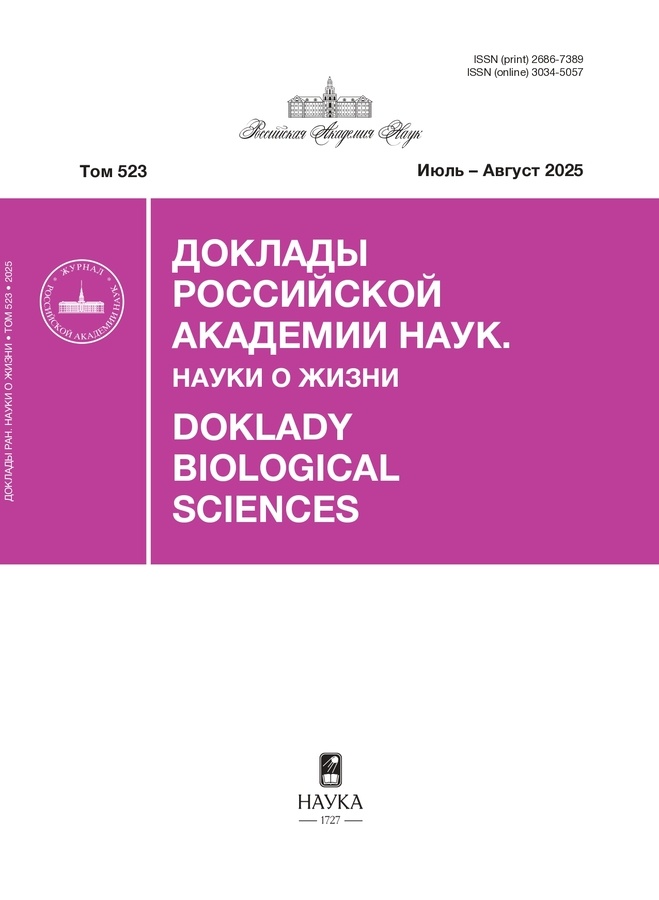Effect of a comparative analysis of different annotations of the Oryza sativa rice genome for in silico verification of predicted promoter sequences
- Авторлар: Bubnova A.N.1, Yakovleva I.V.1, Kamionskaya A.M.1
-
Мекемелер:
- Federal Research Center “Fundamentals of Biotechnology” of the Russian Academy of Sciences
- Шығарылым: Том 523, № 1 (2025)
- Беттер: 452-456
- Бөлім: Articles
- URL: https://medjrf.com/2686-7389/article/view/693506
- DOI: https://doi.org/10.31857/S2686738925040124
- ID: 693506
Дәйексөз келтіру
Аннотация
In this study, promoter sequences predicted by the MAHDS method in the Oryza sativa genome were analyzed using three genome annotations: RefSeq NCBI, Rice Genome Annotation Project, and Ensembl. A portion of the predicted promoters was found to be located near annotated genes, indicating their potential functional role. The remaining sequences, considered as potentially novel regulatory elements, were examined using YAPP for the presence of core promoter motifs and their functional combinations. All analyzed predicted promoters contain either an Inr or a TATA motif – key elements involved in transcription initiation. The identified motif combinations suggest a high likelihood of transcriptional activity in these sequences, while the consistency of the results with annotated data and CAGE-seq signals supports the reliability and applicability of the MAHDS method.
Авторлар туралы
A. Bubnova
Federal Research Center “Fundamentals of Biotechnology” of the Russian Academy of Sciences
Email: an_bubnova@mail.ru
Moscow, Russian Federation
I. Yakovleva
Federal Research Center “Fundamentals of Biotechnology” of the Russian Academy of Sciences
Email: an_bubnova@mail.ru
Moscow, Russian Federation
A. Kamionskaya
Federal Research Center “Fundamentals of Biotechnology” of the Russian Academy of Sciences
Хат алмасуға жауапты Автор.
Email: an_bubnova@mail.ru
Moscow, Russian Federation
Әдебиет тізімі
- Zhang M., Jia C., Li F., et al. Critical assessment of computational tools for prokaryotic and eukaryotic promoter prediction // Briefings in Bioinformatics. 2022. V. 23, № 2.
- Dreos R., Ambrosini G., Périer R., et al. The Eukaryotic Promoter Database: expansion of EPDnew and new promoter analysis tools // Nucleic Acids Res. 2014. V. 43, № D1. P. 92–96.
- Shahmuradov I.A., Gammerman A. J., Hancock J. M. et al. PlantProm: a database of plant promoter sequences // Nucleic Acids Res. 2003. V. 31. P. 114–117.
- Kostenko D.O., Korotkov E. V. Application of the MAHDS Method for Multiple Alignment of Highly Diverged Amino Acid Sequences // Int. J. Mol. Sci. 2022. V. 23, № 7.
- Bubnova A.N., Yakovleva I. V., Korotkov E. V., et al. In silico verification of predicted potential promoter sequences in the rice (Oryza sativa) genome // Plants. 2023. V. 12. № 20.
- Sayers E.W., Bolton E. E., Brister J. R., et al. Database resources of the national center for biotechnology information // Nucleic Acids Research. 2022. V. 7, № 50. P. 20–26.
- Kawahara Y., de la Bastide M., Hamilton J. P., et al. Improvement of the Oryza sativa Nipponbare reference genome using next generation sequence and optical map data // Rice. 2013. V. 6, № 4.
- Quinlan A.R., Hall I. M. BEDTools: a flexible suite of utilities for comparing genomic features // Bioinformatics. 2010. V. 26№ 6. P. 841–842.
- Thorvaldsdóttir H., Robinson J. T., Mesirov J. P. Integrative Genomics Viewer (IGV): high-performance genomics data visualization and exploration // Briefings in Bioinformatics. 2013. V. 14. P. 178–192.
- Jin V.X., Singer G. A., Agosto-Perez F. J., et al. Genome-wide analysis of core promoter elements from conserved human and mouse orthologous pairs // BMC Bioinformatics. 2006. V. 7, № 114.
- Smale S.T., Kadonaga J. T. The RNA polymerase II core promoter // Annual review of biochemistry. 2003. V. 72. № 1. P. 449–479.
- Smale S.T., Baltimore D. The “initiator” as a transcription control element // Cell. 1989. V. 57. № 1. P. 103–113.
Қосымша файлдар









